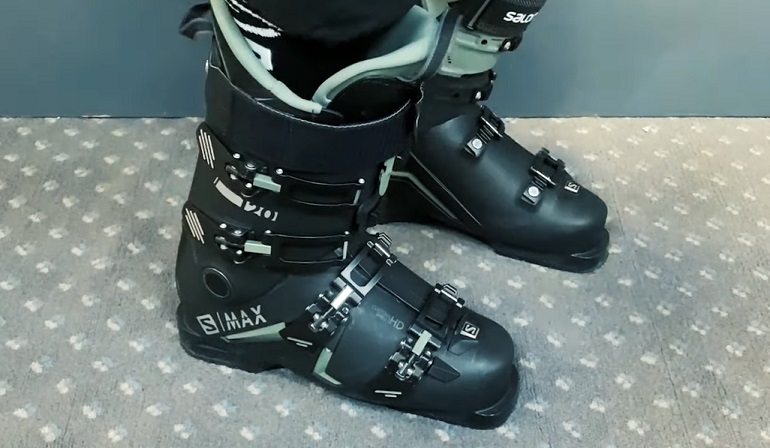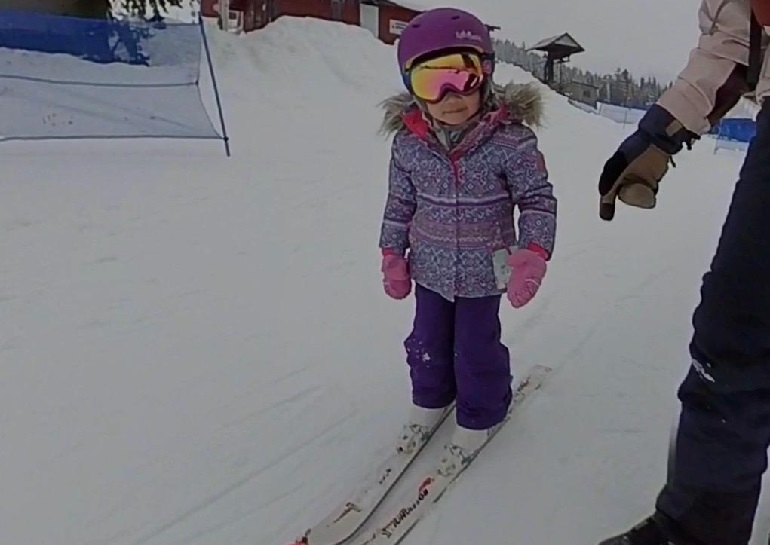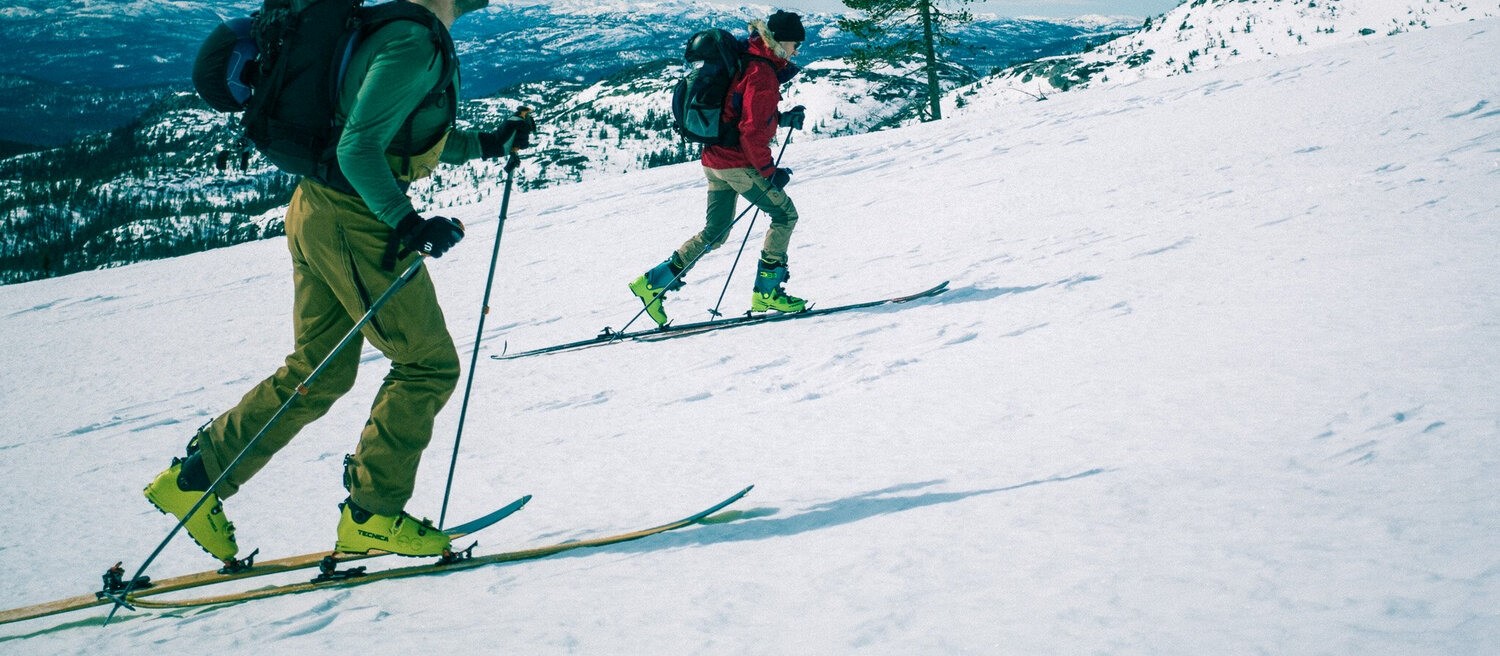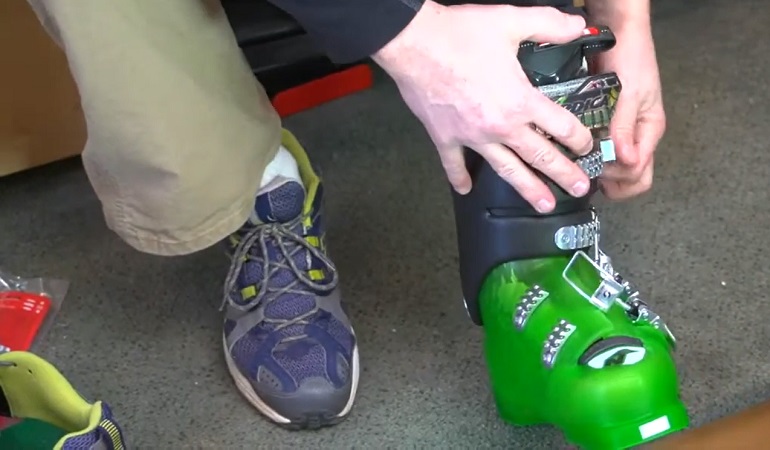Overview
Ski boots are the essence of your skiing adventures! The cream to your coffee, the sugar to your tea! If you’re thinking that your skis are actually what make or break your skiing trips, then you’re wrong!
Your skis are nothing more than two planks of wood that are practically useless unless or until you have the right boot fit to pair them with. An accurate ski boot fit ensures that you can maneuver and control your skis on the trails properly.
Your best ski boots must be a snug fit, with no frustration, pulling, or tugging. The front of the boot shouldn’t give too much space for your toes, but at the same time, you can wiggle them freely.
On the other hand, the rest of your foot must fit so perfectly that you can’t dislodge it just by moving your feet on your own. There should be no looseness anywhere.
How Tight Should Ski Boots Be?
Just like a warm winter coat should fit, your ski boots must fit in the same manner. You don’t want it to be too tight that it feels like a straitjacket and it shouldn’t be too loose that it feels like you’re barely wearing anything.

Once you slip your ski boots on, your foot in the liner should be able to achieve a fair amount of back-and-forth wiggle movement. Moreover, your toes at the front of the boot should be able to only slightly touch the boot front with your heel supported by the back of the boot.
An important point you must heed is that your foot shouldn’t be sliding back and forth inside the shoe after you have fastened all the buckles. However, at the same time, the ski boots shouldn’t be so tight that you feel the blood circulation constrict in your feet.
If your ski boot fit is too tight, then you won’t be able to tell when a certain essential pressure point is pressed upon, and that could lead to a fair amount of discomfort for the rest of the trip. And since the feet are where a majority of your body’s pressure points are… you don’t need that trouble.
When buckling your ski boots at the top, this task shouldn’t be a struggle as after the buckles are fastened, the boot should feel snug on the calf muscle. If you feel a soreness in your calf muscles after your skiing experience, that is an adequate warning sign that your buckles are too tight.
Consider investing in some buckle extenders if the pre-existing boot buckles prove to be too tight even at their loosest.
What Happens When Ski Boots Are Too Large?
Sometimes, you can find a pair of ski boots that fit properly around your calves but are too wide around the toes and heels. Or, vice versa! In any case, a ski boot fit that is a tad bit too wide could cause a whole lot of issues in the long run for you.

Some skiers have a wide foot shape, and it is essential to find a size and ski boot that accommodates their foot at all costs. Whereas others may have a unique foot shape but accidentally were sold the wrong size. In either case, you need to immediately get rid of the wide ski boot fit and find one that fits just right.
When a ski boot is too wide for the user’s foot, then you will experience a heel lift while walking or skiing. On top of that, your foot will constantly be sliding to and fro inside of the ski boot as you are sliding down the snowy trails.
In both of these scenarios, you could cause yourself a serious ankle or foot injury, blisters, or sore bruises. Not just that but your overall performance greatly declines with a ski boot that fits too wide.
What Happens When Ski Boots Are Too Small?
Have y’all ever worn a pair of too-tight boots? Ladies… maybe a pair of cute heels that feel like they’re strangling your poor feet? Now picture that, but you’ve got to go running in said cramped shoes. Yeah.. sounds like absolute hell to me too!
You guys know how this goes! Blisters, sore bones, cramped toes, painful tendons… etc. However, skiing with tight ski boots gets way worse since you are engaging in a rigorous activity whilst your poor feet are packed into a ski boot that fits two sizes smaller.

Prolonged use of a ski boot that doesn’t have enough room to accommodate your feet could rearrange the bones of your feet and result in long-term crippling and injury at a young age.
Here are a few pointers to pay attention to when trying on new ski boots to determine whether they’re too tight or not:
- You feel a pinching discomfort at the back of your calf.
- You feel an uncomfortable pressure at the back of your heel or outer ankle.
- You feel an intense squeezing force in the middle of your feet.
- Your toes can’t outstretch in a comfortable fit as they either feel jammed against the boot’s end or curl inwards to accommodate the rest of your foot in the boot.
The Ideal Fit for Ski Boots
There are only three easy points to remember.
- The boot feels roomy at the toe area so you can freely move your toes.
- The middle of your foot should be in a snug fit and well-supported.
- Your ankles and heels must feel like they’re being enveloped in a welcoming hug by just the right fit.
If any of these points are left unsatisfied by the pair of ski boots you are trying on, that’s a sign to keep trying till you find one that does.
Do Ski Boots Loosen Up?
Exactly like every pair of shoes or other clothing that you use regularly, ski boots are also bound to widen over time. However, there are two aspects to this discussion.
First, when you are breaking in the boots, they will need a couple of days of extended wear so they can accommodate your foot comfortably. Key areas like the heel pocket, toe box, and overall shell fitting will get a lot more cozy after the first couple of days.
Secondly, after prolonged use and wear, the shell boot and overall boot get looser, and that’s completely natural. If you start buckling and notice that the boot no longer fits the way you remember it, then that’s probably a sign you should buy a new pair.
How Your Ski Boot Fit Should Feel?

Most advanced skiers will tell you the same important piece of advice. A perfect fit shouldn’t restrict blood circulation. Meaning it shouldn’t feel like your feet are being punished for being inside those boots.
The best way to ensure that you can get the perfect fit for your ski boots is by utilizing the boot sizes available on Mondopoint. These proved to be highly convenient for me as the foot sizes provided there are equivalent to my foot length in centimeters.
The easiest way to actually do this is by placing your foot on a piece of paper and measuring the distance between the end of your heel and the start of your longest toe.
Once you get your ski boot size right, let’s talk about how your fit should feel. A professional boot fitter will instantly tell you that the ski boot feel for beginner and expert skiers differ greatly.
Beginner and intermediate skiers can test their good-fitting boot by removing the liner, slightly bending their knees, and sliding their toes to the very front of the boot without wearing warm ski socks.
Without ski socks on, you can determine just how much space is available in the boot for your toe movement and overall foot support. Next, you will need to wiggle your toes, flex forward and try to fit two fingers in the space between the boot cuff and where your calf meets it.
For an expert skier, the same technique should be utilized however the only difference is that instead of two fingers, only one finger should fit between the calf and boot cuff. This ensures a more enhanced performance fit that is a lot more snug and well-fitted for stunts and tricks in the air.
When Should Ski Boots Be Replaced?
Manufacturers have reported that a pair of good ski boots that fit well and provide key performance should last about 200 skier days. However, an experienced boot fitter will tell you that 90 ski days are more than enough to wear out the boot liner.
And, I know! You might be thinking, “Hey, just take out the boot liner and we’re good to go!”

Well, that’s both a yes and no. With the liner’s reduced longevity, the boot shell is also disintegrating as you practice, ski, and walk around in the boots. Therefore, it is advised to change boots after 90 skier days to avoid any sort of mishaps or injuries.
About Boot Volume
When speaking in ski terms, boot volume refers to how much space is between the top of the boot’s inner sole to the bottom of the boot’s outer sole as well as the amount of space in the toe box.
Usually, boot brands manufacture three different volume options ranging from Low (97-99 m) to Mid (99-101 mm) and High (100-104 mm).
Volume plays an integral part when you’re selecting a boot with enough room for your foot. A volume that’s too high will give your foot too much space to move around inside the boot leading to a declined ski performance.
I always appreciate and follow the sound advice of Tischendorf who stressed the importance of width rather than volume when shopping for wide feet ski boot.
Pro Tip to Help You Judge Your Boot Fit
The finger fit technique is a method that many skiers utilize to ensure there isn’t too much room or too less space in their boots.

Where too much room is concerned, you could lose control of your skis and ricochet into oblivion mid-air. On the other hand, too less space could cause uncomfortable pressure on certain parts of your feet.
The finger fit method involves removing the inner boot from the outer shell and sliding your feet in it without wearing any modern ski socks. If you can fit no more than 2 fingers behind your heel pocket, then the sizing is just right.
If you can fit three fingers, you should look for another pair a half size lesser than the current one. In the case where you’re unable to even fit one finger, increase your size by 0.5.
FAQs
How Long Does It Take to Break in Ski Boots?
Skiing experts who have gone through hundreds of boots in their life say it takes 4 days maximum till the liner packs down comfortably. However, that depends on how you are used to wearing your shoes, your foot shape and just how strenuously you ski.
How Can I Stretch Ski Boots at Home?
For an at-home yoga session for your ski boots, you will generally need a heat source (hot air gun/oven) and stuffing equipment (or a boot fitter tool). The process is fairly straightforward as you have to start with heating your boots (pop them in a 200-F preheated oven or use a hot air gun) to make the material pliable and flexible.
Next either use a boot fitter tool to widen the interior or if you don’t have that then wear extra thick socks and place foam bits on the spots that you need to stretch out (such as the toe or heel pocket). Wear the boots and walk around with them for at least an hour a day.
How Painful Should Ski Boots Be?
Well, on a scale of 1 to 10… zero! Most skiers who have had a bad starting experience with skiing boots by either wearing the wrong size or unknowingly tolerating painful shoes would say that in the start it should. But, that is not true! Your boots should be the perfect fit with no ailing toes or sore heels.
How to Keep Your Feet Warm?
Yea, I know you’re hitting the snowy trails, but inside ski boots, your feet should never be cold. Cold feet are usually a result of restricted blood flow and prolonged compression. Start off by ensuring you are wearing the right boot fit.
If you are but still experience cold feet, try swapping out your ski socks for some heated or wool-based ones. If that still doesn’t cut it, there are some amazing custom footbeds out there with inbuilt battery-powered heaters to keep you warm and snug as a bug.
Final Thoughts
On a finishing note, I’d like to emphasize once more that ski boots shouldn’t be painful and constricting to wear. Simply you should feel like your feet are wrapped in a warm hug.
Happy skiing guys!
0 Comments